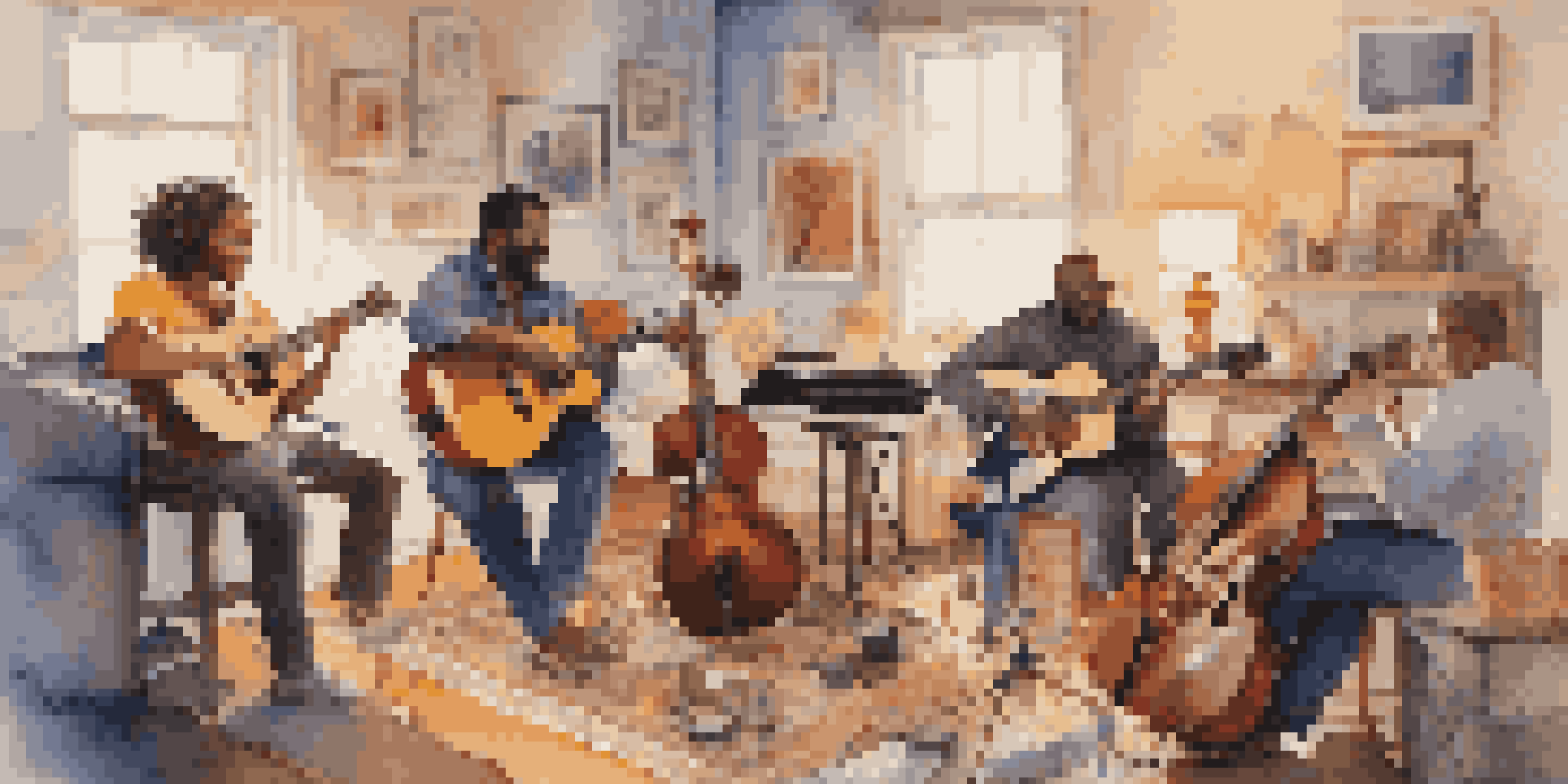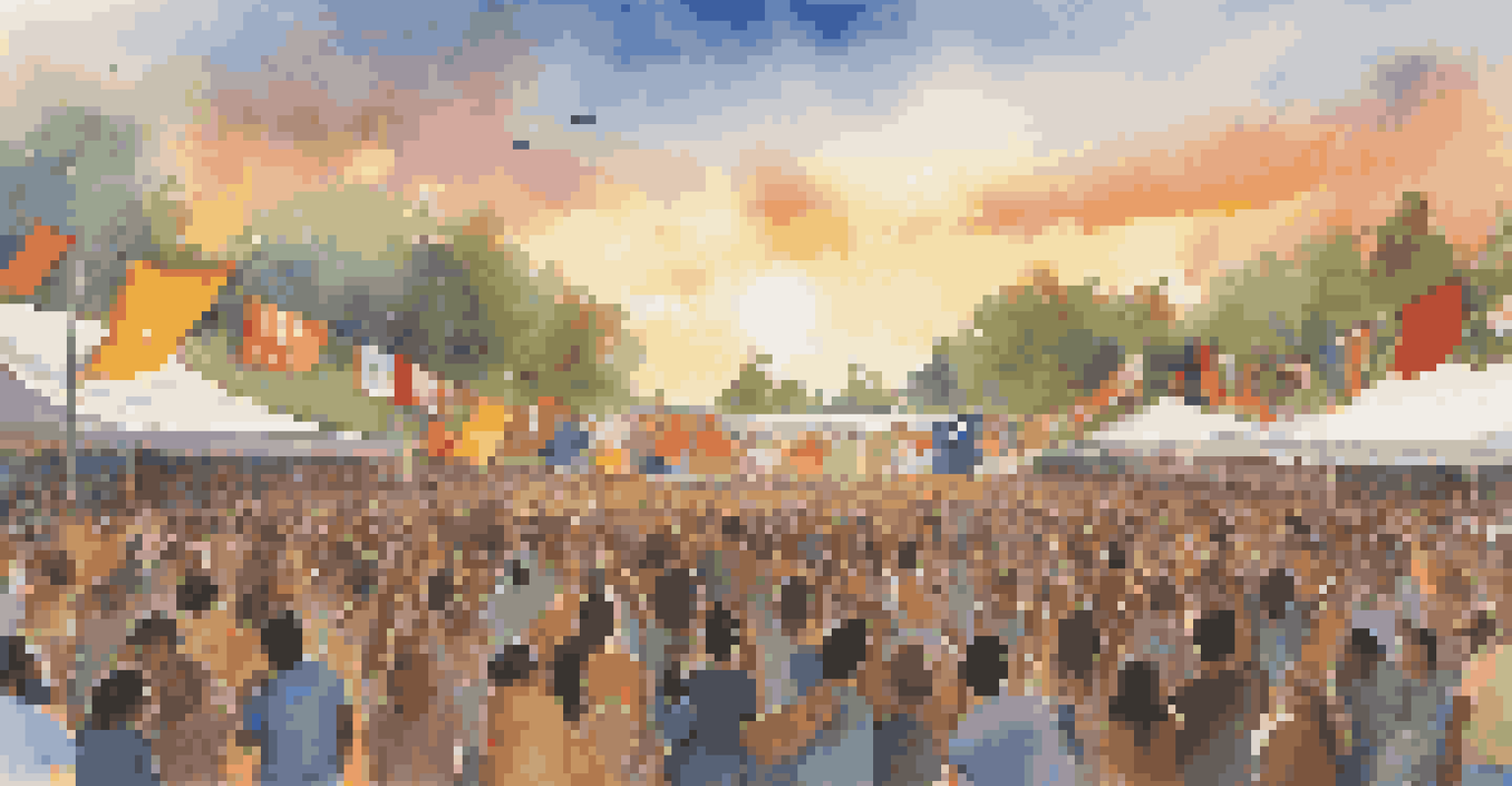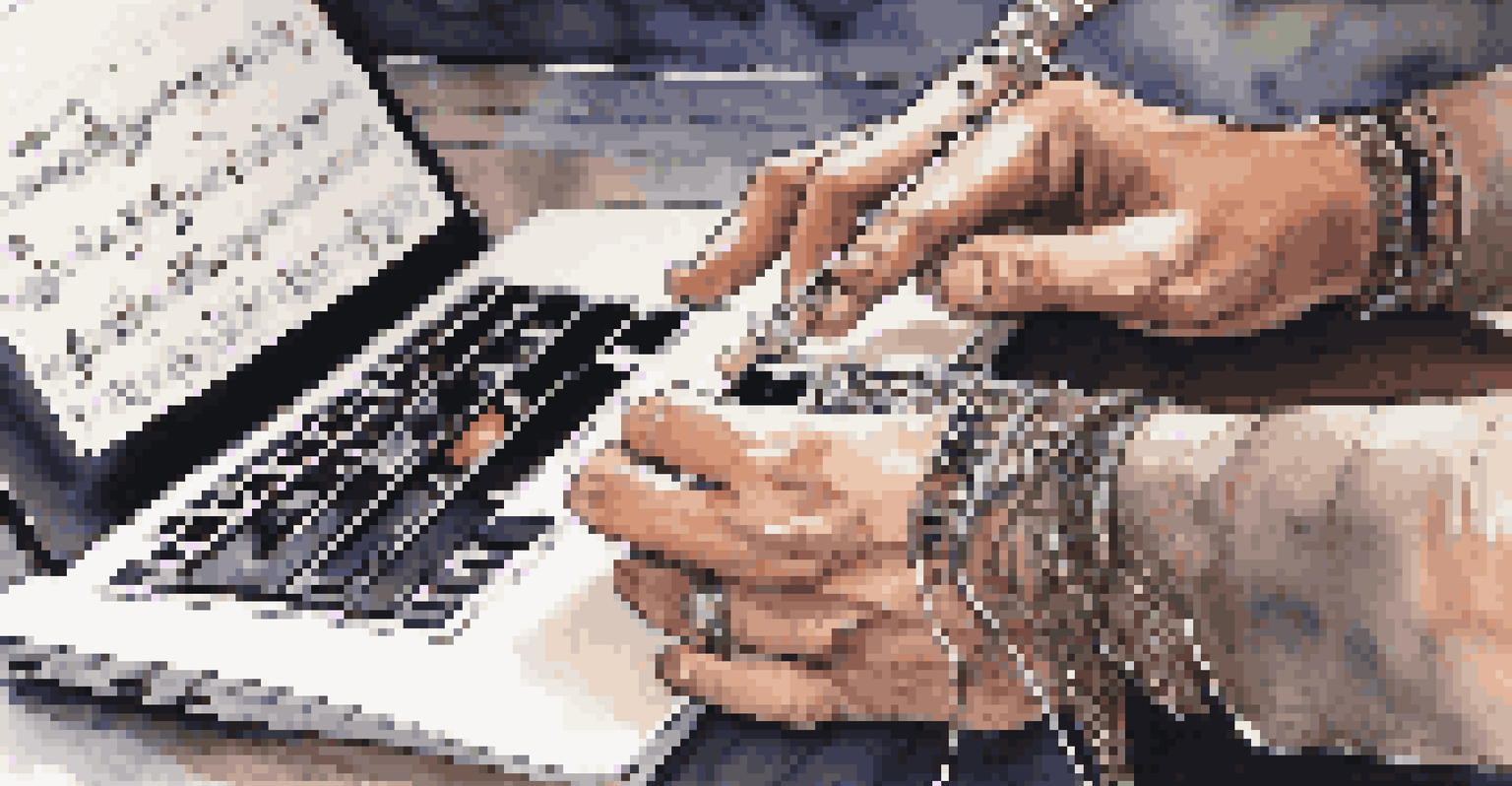Collaborative Projects: Creating a Supportive Music Community

Understanding the Importance of Collaboration in Music
Collaboration is the heartbeat of the music community. When artists come together, they create a synergy that often leads to innovation and fresh ideas. Think of it like a potluck dinner; each musician brings their unique flavor, and together, they serve up something truly special.
Alone we can do so little; together we can do so much.
Moreover, collaboration fosters a sense of belonging and support among artists. In an industry that can sometimes feel isolating, working together allows individuals to share their struggles and triumphs, creating a network of encouragement. This supportive environment can be a game-changer for budding musicians.
Additionally, collaborative projects often lead to exposure and opportunities that individuals might not achieve alone. By pooling resources and talents, musicians can reach wider audiences and explore new avenues for their work, ultimately elevating their careers.
Building Trust and Open Communication
Trust is the foundation of any successful collaboration. It’s essential for artists to feel safe sharing their ideas and vulnerabilities. Just like in a friendship, transparency fosters deeper connections, making it easier to create music that resonates with others.

Open communication is equally important. Regular check-ins and discussions about goals, visions, and feedback can prevent misunderstandings and keep everyone on the same page. For instance, if one artist prefers a certain sound or style, openly discussing it can lead to a harmonious blend of ideas instead of conflict.
Collaboration Sparks Creativity
When musicians collaborate, they bring unique ideas together, resulting in innovative and fresh music.
Lastly, establishing clear roles and responsibilities can help maintain accountability. When each member knows their contribution, it's easier to celebrate collective successes and learn from challenges together, strengthening the bond within the group.
Utilizing Technology to Foster Collaboration
In today's digital age, technology plays a crucial role in music collaboration. Platforms like SoundCloud and BandLab enable artists to share their work, receive feedback, and even co-create in real time, no matter where they are in the world. This accessibility opens up endless possibilities for collaboration.
Collaboration allows us to know more than we are capable of knowing by ourselves.
Moreover, social media can be a powerful tool for connecting with other musicians. By sharing snippets of your work and engaging with others, you can find like-minded artists who share your passion. Think of it as casting a wide net; you never know who might reel in a collaborative opportunity.
However, while technology is an enabler, it’s important to find a balance. Too much reliance on digital communication can sometimes hinder the personal touch that face-to-face interactions provide. Striking a balance between digital and in-person collaboration can lead to more meaningful connections.
Creating Inclusive Spaces for All Musicians
An inclusive music community welcomes artists from diverse backgrounds, ensuring that everyone feels valued. This diversity not only enriches the creative process but also reflects the reality of the world we live in. Just like a colorful tapestry, each thread contributes to the overall beauty of the piece.
To foster inclusivity, it's essential to create safe spaces where all voices can be heard. Whether through workshops, open mics, or online forums, providing platforms for everyone to express themselves encourages participation and collaboration. This can lead to unexpected partnerships and unique sounds.
Trust and Communication are Key
Building trust and maintaining open communication among artists are essential for successful collaborations.
Furthermore, mentorship programs can significantly benefit underrepresented musicians. By pairing experienced artists with newcomers, you create a supportive environment where knowledge and skills can be shared. This exchange not only helps individuals grow but also strengthens the community as a whole.
Collaborative Projects: From Idea to Execution
Turning a collaborative idea into reality requires careful planning and execution. Start with brainstorming sessions where everyone can pitch their concepts and contribute to the project’s direction. This democratic approach ensures that all voices are included from the very beginning.
Once the vision is set, outlining the steps to achieve it can keep the project on track. This could involve setting deadlines, assigning tasks, and regularly reviewing progress. It’s similar to building a house; you need a solid blueprint to ensure everything fits together nicely.
Finally, celebrating milestones along the way can maintain motivation and enthusiasm. Whether it's a small gathering or a social media shoutout, recognizing achievements fosters a sense of accomplishment and encourages everyone to stay committed to the project.
The Role of Feedback in Collaborative Music Projects
Feedback is a crucial component of any collaborative effort. Constructive criticism helps artists refine their work, pushing them to grow and evolve. Think of feedback as a mirror; it reflects areas that may need improvement while also highlighting strengths to build upon.
Creating a culture where feedback is welcomed and appreciated can enhance the collaborative experience. It’s important to communicate that feedback is meant to help, not to criticize. This can be likened to a supportive coach guiding an athlete to their best performance.
Inclusivity Strengthens Community
Creating inclusive spaces for diverse musicians fosters a supportive environment that enhances collaboration and creativity.
Moreover, fostering an environment where artists feel comfortable giving and receiving feedback can lead to deeper connections. The more vulnerable and open individuals are with each other, the more authentic the music becomes, resonating with audiences on a profound level.
The Lasting Impact of Collaborative Music Communities
The impact of collaborative music projects can extend far beyond the initial creation. Artists often find that the relationships formed during these collaborations lead to long-term partnerships and friendships. This sense of community can be incredibly fulfilling, both personally and professionally.
Furthermore, successful collaborations can inspire others in the music community. When audiences witness artists coming together to create something beautiful, it encourages them to seek collaboration in their own journeys. It’s like a ripple effect; one project can spark many others.

Lastly, fostering a supportive music community contributes to the overall health of the industry. By uplifting one another, artists can create a vibrant ecosystem where creativity thrives. In the end, collaboration isn't just about making music; it's about building a legacy that resonates for generations to come.